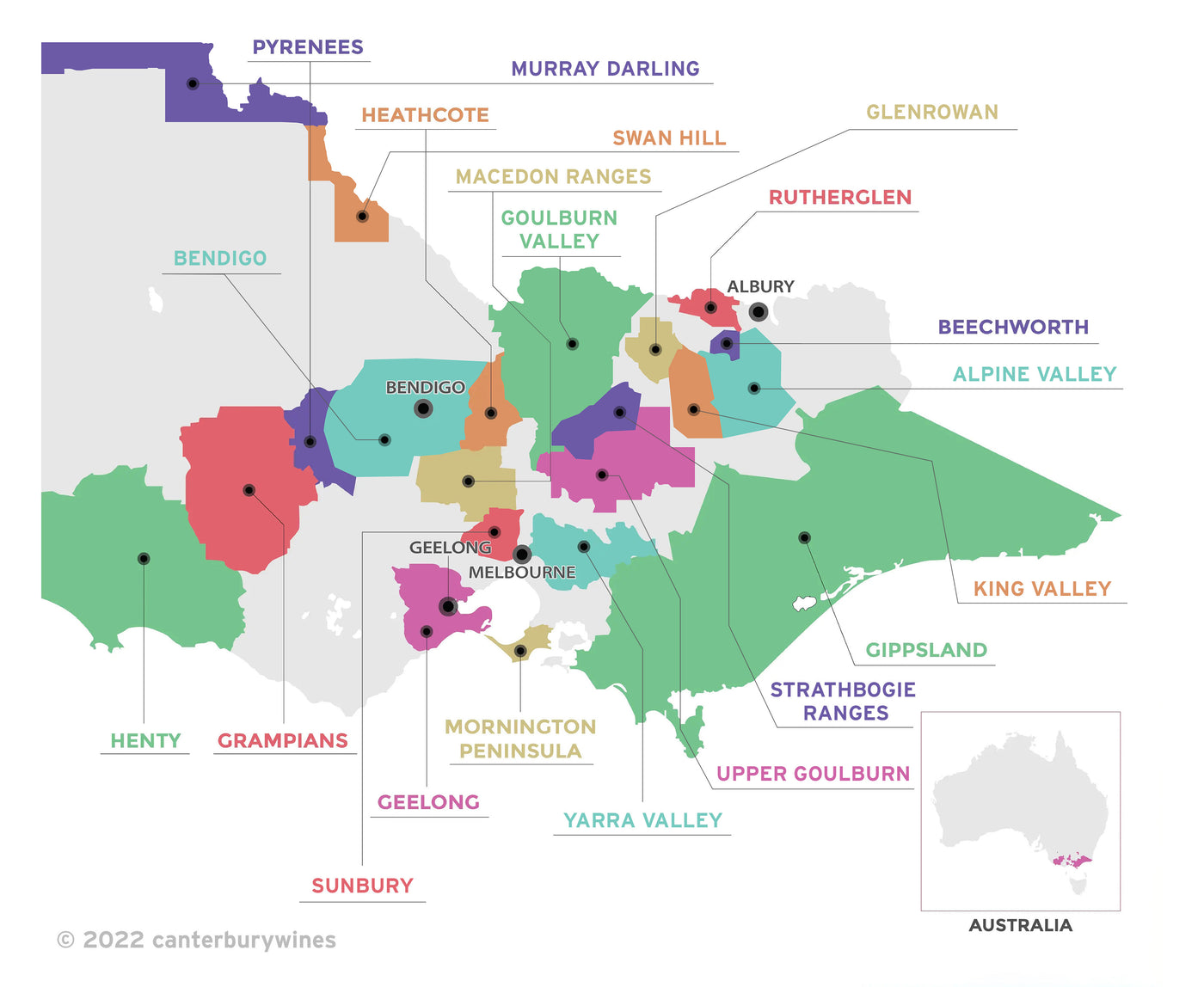

Dalwhinnie Moonambel Cabernet Sauvignon 2006
Style: Red Wine
Closure: Cork
Dalwhinnie Moonambel Cabernet Sauvignon 2006
Warehouse
34 Redland Drive
Vermont VIC 3133
Australia
Critic Score: 94
Alcohol: 13.5%
Size: 750 ml
Drink by: Now
Dalwhinnie, located near the small village of Moonambel in the heart of the Pyrenees region of western Victoria, is one of Victoria's oldest family-run vineyards. Dalwhinnie has been growing grapes for nearly 50 years and the 16-hectare vineyard is now fully mature. At 595 metres above sea level, Dalwhinnie is the highest and most remote of the Pyrenees district vineyards. The vineyard is located in a naturally undulating trough which falls away from the hills, forming an amphitheatre nestled into the ranges.
"It's an elegant cabernet but there's enough substance to keep all-comers happy. It is a high quality wine. It tastes of pencils, currants, chocolate and eucalypt, and its balance between fruit flavour and complex tannin is impeccable. Musky oak drifts through the aftertaste – this is a medium-weight, well structured cabernet of inherent class." Campbell Mattinson
"Dark cherry red, clear and bright. Fine elegant cedar cigar box perfume with lifted dark berry fruits. The bouquet is clean and varietally correct. Very fresh. The palate is very tight and highly strung, displaying the fruit, oak and acid in a very juvenile state. The balance of these three elements is impeccable for such a young wine. Shows all the characteristics of Grand Cru Left Bank Bordeaux.
Probably the finest Cabernet Sauvignon we have ever made, even better than the 2004. There is much said about Cabernets from other regions, but if you really want to drink magnificent Australian Cabernet Sauvignon, do not dismiss the Pyrenees, the show results speak for themselves. Enjoy! Cellaring Potential: 8 - 10 years." Dalwhinnie
"Dalwhinnie wines have tremendous depth of flavour, reflecting the relatively low-yielding but well-maintained vineyards. The vineyards are dry-grown and managed organically, hence the low yield, but the quality more than compensates." James Halliday
Expert reviews
"A layered, complex wine, fully integrated and showing generous levels of fruit, savoury oak and ample, quite slippery, fine-grained tannins. Cork. Drink Now-2018" James Halliday, Halliday Wine Companion - 94 points
"It's an elegant cabernet but there's enough substance to keep all-comers happy. It is a high quality wine. It tastes of pencils, currants, chocolate and eucalypt, and its balance between fruit flavour and complex tannin is impeccable. Musky oak drifts through the aftertaste – this is a medium-weight, well structured cabernet of inherent class. Drink: 2012-2017." Campbell Mattinson, The Wine Front - 93 points
About the winery

Dalwhinnie, located near the small village of Moonambel in the heart of the Pyrenees region of western Victoria, is one of Victoria's oldest family-run vineyards. Dalwhinnie has been growing grapes for nearly 50 years and the 16-hectare vineyard is now fully mature.
Ballarat architect Ewan Jones purchased the site in 1973 and named it after the Highlands town of his Scottish ancestors. He established the vineyard in 1976 and his eldest son, David, took over its management seven years later. David subsequently purchased the property in 1994 and operated Dalwhinnie until January 2020, when it was acquired by Fogarty Wine Group.
At 595 metres above sea level, Dalwhinnie is the highest and most remote of the Pyrenees district vineyards. The vineyard is located in a naturally undulating trough which falls away from the hills, forming an amphitheatre nestled into the ranges. According to David Jones, the hills and the sedimentary soils of the Pyrenees are vital factors in the vineyard's uniqueness.
The main grape varieties grown are Chardonnay, Shiraz and Cabernet Sauvignon. These small individual vineyards average around 1.8 hectares in size and because of the hungry sedimentary soils, cropping levels are low - only 1.5 tonnes per 0.8 of a hectare.
The site is totally frost-free which enables the grapes to reach optimum ripeness. The vineyard is non-irrigated and operated on strong organic viticultural principles. The fruit is hand-picked and the vines are cane-pruned by hand. Harvest usually starts the third week in February and is completed around the first week in April. Cover crops are sown every year between the vineyard rows to add nitrogen to the soil. The average annual rainfall is 550mm with most rain falling between July and November.
"In Dalwhinnie, the Joneses have happened upon that rare but blessed confluence of factors: site, soil, climate, cultivars, viticultural practices and sensitive winemaking. Sit back and watch, as Dalwhinnie etches a name for itself, not only among the great wines of Australia, but the world." Huon Hooke

Victoria
Victoria is home to more than 800 wineries across 21 wine regions. The regions are Alpine Valley, Beechworth, Bendigo, Geelong, Gippsland, Glenrowan, Goulburn Valley, Grampians, Heathcote, Henty, King Valley, Macedon Ranges, Mornington Peninsula, Murray Darling, Pyrenees, Rutherglen, Strathbogie Ranges, Sunbury, Swan Hill, Upper Goulburn and Yarra Valley.
Victoria's first vines were planted at Yering in the Yarra Valley in 1838. By 1868 over 3,000 acres had been planted in Victoria, establishing Victoria as the premier wine State of the day. Today, the original vineyards planted at Best's Wines are among the oldest and rarest pre-phylloxera plantings in the world.
Victoria's climate varies from hot and dry in the north to cool in the south and each wine region specialises in different varietals. For example, Rutherglen in the north is famous for its opulent Muscats and Topaque and bold reds, while the many cooler climate regions near Melbourne produce world class Chardonnay and pinot Noir. Victoria is truly a wine lover's playground.

